by Michael Cropper | Aug 18, 2015 | SEO |
Today I wanted to share a short story about the importance of keeping your technology up to date within your business and the consequences if you heed to take notice of this advice. Far too often within business, business owners and employees have an approach of “do it once and forget about it”, well with technology, this approach is doomed to failure and can cost your business a lot of money in the long run.
Computer Hardware
The first recent example relates to a business whose computer equipment wasn’t as up to date as it should have been. The hardware was around 3 years old, which on a laptop by this time the performance has already started to significantly degrade from when you first bought it, and the software simply hadn’t been managed well during this time either.

While this is a recent example, this same scenario we have seen multiple times before with businesses of varying sizes so this is certainly not uncommon which is why we want to stress the importance of keeping your technology up to date. Avoid going through the same frustrations others businesses go through by implementing a common sense approach to maintaining your technology on a regular basis.
Firstly, running your business on slow computer hardware can significantly impact the performance of you, your staff and your business as a whole. For example, I recently heard a story from a reputable source which went as follows; UPS would save $1,000,000 of costs for every 60 seconds per day of time saved for each of their delivery drivers globally. When you start to add this up over the year, this is an enormous amount. Knowing this, they spend a significant amount of time, money and resources in optimising delivery routes using technology which is ultimately designed to work towards reducing the time it takes drivers to deliver parcels. Based on this, they implemented several interesting technologies designed to reduce wasted time. They placed a Bluetooth fob on each driver and connected all devices to the cloud. What this meant is that when the delivery driver had stopped at the next delivery point, known based on the GPS location, and they turned the engine off, the rear hatch of the van would open automatically, saving precious seconds of wasted time. As the driver walked up the garden path to deliver the parcel, if the package had not been signed for on their handheld device, this was a signal that the back of the van needed to be opened again automatically as the driver returns to the vehicle so the package can be placed back into the van, again saving precious seconds. Then finally, as the driver returned to the front of the vehicle, the engine would automatically start to save a further few seconds. Based on all of these small time savings throughout the day, UPS found that they would save 17 seconds per driver per day by utilising technology to drive efficiencies within the business. Based on the savings they make per 60 seconds, it is clear to see how this significantly impacts the bottom line. Whether this story is 100% accurate or not isn’t the point, this is a believable story about a company of this size. Regardless of the accuracy of this particular story the point is still valid about companies utilising technology to improve the business as a whole which is true in endless organisations.
Now I’m not saying that your business is going to go to these lengths to optimise your business but when you look at the computer hardware running in your business and ask yourself, is it helping or hindering your business and employees? Remember, there is no middle ground. A slow running computer results in staff sat there waiting for technology to keep up with them which is extremely inefficient and can cost a significant amount of money over time;
- 60 seconds per hour wasted
- 8 minutes per day
- 40 minutes per week
- 2.6 hours per month
- 34.6 hours per year
- X the number of employees
What is a week of time worth to you, your employees and your business as a whole? I can bet that it is more than the cost of upgrading the underperforming technology within your business!
Now this isn’t just about cost savings, but imagine what you could achieve in a week. Having an additional 2% of time available per year per employee, I’m sure you could achieve some amazing things. New customers, new processes, technologies, investments within your business, additional revenue and more.
The same is true for website technology. There have been countless studies proving how website speed directly impacts the performance of your website, particularly ecommerce and can show significant improvements in conversion rates and revenue based on technology improvements.
Skimping on your hardware is only costing your business money, just in ways that aren’t as clear to see. You either choose to do something about this and get the right technology in place that you need, or you choose to “put up with it for another year” and cost your business money.
Computer Software
Along the same lines as computer hardware, it is imperative to keep your computer software up to date. This is the software that you are using on a day-in-day-out basis which is powering your business. We’ve seen organisations still using Windows XP which is no longer supported from a security point and businesses running 5 year old software because they haven’t made the small investments of generally less than £200 to upgrade their software.

To put this into perspective, the same situation occurred with two businesses recently who were running outdated software on the computer. When it came to upgrading a completely separate system, their business email addresses, then integrating this into their current desktop software of their choice, the result was nothing but problems with their computer software.
What should have been a 2 minute job to integrate the two together turned out to be hours worth of work from both parties testing various solutions to fix the desktop software to work as it should do. Again, hours of wasted time for all involved because the wrong technology was implemented from the start, configured by someone who had no idea what they were doing and working form software that is now almost 6 years out of date.
Within business the decisions are simple, you either do the right thing, or you choose not to do the right thing. We see time and time again the cost of bad decisions when it comes to technology which is why we try and educate businesses to working with the right technology from the start to save them money.
We aren’t an IT support company, there are plenty of great IT support companies around who do that far better than we ever could. That being said, as we are in the technology industry working with leading edge technologies, we come across a lot of antiquated systems before we get around to upgrading them which often requires us to cross that bridge into the IT support world to integrate systems together.
Website Technology
Again, along the same lines as the several examples already given but now looking at website technology. A story about a businesses who required serious security updates to their WordPress website. On first glance, this sounded like an hour or two’s worth of work which was explained with the caveat that we would need to take a look at the underlying technology in a little more detail before we could provide an accurate estimate of the work involved.

Lo and behold, the same bad decisions in a different area we see time and time again. This time, the decision around 3 years ago was to purchase a cheap WordPress Theme from one of the many Theme Directories / Marketplaces on the web. This was likely an innocent decision to purchase a $49 theme “because it looked nice”. The realities of this meant that it was not possible to upgrade their system in the expected hour or two’s worth of work. Instead, this was looking like 4-5 day’s worth of time to implement the right solution and patch the security holes.
I won’t bore you with the finer technical details of this, so suffice to say that the problem lied with purchasing a poorly built WordPress Theme 3 years ago. Due to this, certain key ecommerce technologies and core WordPress files once upgraded would actively break the website, essentially closing the digital doors of your business and turning off your revenue stream. So it was either leave the website open to hackers by not patching known and commonly exploited security holes, or, making the essential upgrade to the right solution.
All of this can be avoided when you are working with the right digital agency and you select the suppliers who are adding value to your business. I’d urge you to consider the longer term impacts of the technology decisions you are making today. Time and time again we see bad decisions made with businesses having to spend a lot of money fixing problems instead of implementing real solutions to grow their business. For us, this is part and part of what we do, what we enjoy and ultimately what we get paid for. We would much rather be focusing work towards implementing technologies within your business that are going to take your business to the next level rather than fixing problems caused by poor decisions years ago. We do both thankfully and I can honestly say that the clients who see the greatest returns from their investment in digital and technology are the clients who make the right technology decisions time and time again. I’ll never forget a phrase an old colleague once said to me and it couldn’t be truer in this scenario, “Quick wins lead to long losses”. Think about that.
Solution
Ok, so we’ve talked about the problems that poor technology causes and given a few prime examples related to this. So what next? How do you keep your technology up to date without spending an arm and a leg every month? Well, it’s actually relatively straight forward and only requires a strict procedure within your business or from your suppliers who actively maintain the core aspects of your business;
- Hardware Technology: Keep it up to date! Slow hardware costs money in terms of staff time, unproductive time, missed opportunities and more. Invest in the right equipment to do the job. You could eat soup with a fork, but it’s probably best you use a spoon…
- Software Technology: Keep it up to date! Patch software and update as soon as possible after the improvement has been announced. Don’t delay and don’t wait years before upgrading. Out of date software causes a lot of problems and makes any integrations harder to work with. There is only so much you can do with the digital equivalent of Gaffer tape…
- Website Technology: Keep it up to date! Particularly when using popular open source software and 3rd party plugins, it is imperative to keep your website up to date purely from a security point of view to update core files, plugins and themes. Beyond this, regular website maintenance packages and continual improvements allows your website to be ever evolving and working for your business. So rather than seeing your website as a cost look at this as a digital asset worthy of investing in.
You may be noticing a trend here….keep your technology up to date or it will cost your business money further down the line. If you would like an informal conversation about how we can work together to keep your technology up to date then get in touch. Our focus is on digital marketing, online technologies and software integrations so if you need any IT support then if you don’t know of anyone who does this just drop us an email and we’ll be sure to point you in the right direction of a few great companies. If you’re looking for a sounding board for your technology decisions within your business we are more than happy to talk and have starter packages designed to give your business the expertise it needs to grow through our Digital Lifeline packages.
by Michael Cropper | Aug 14, 2015 | SEO |
Today I want you to have a think about your organisation and its suppliers in general, digital or otherwise. And ask yourself the question; are your suppliers costing you money or adding value to your business?
Naturally with speaking with a lot of businesses we hear a lot of information and comments about costs, investments, pricing information and a lot of other information that enables us to get a good feel for how a business perceives different items within their business and supply chain. There is an excellent book titled The Slight Edge by Jeff Olson, which if you haven’t read I’d urge you to go out and buy a copy now. The book can really be summarised by the image below;
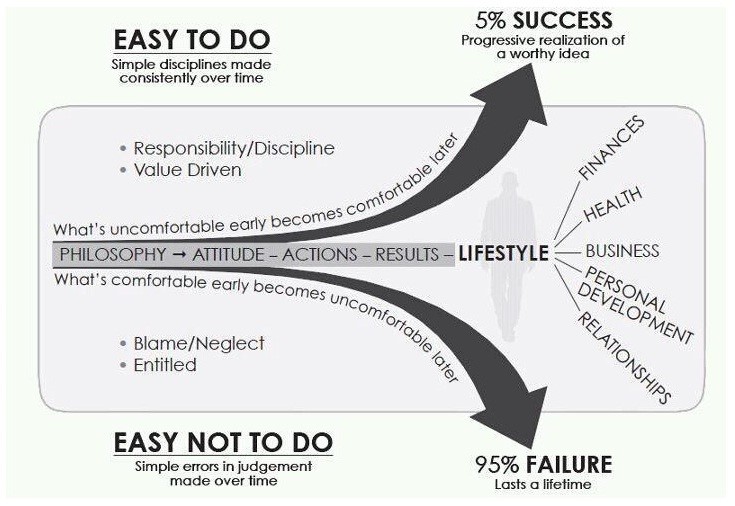
Source: http://slightedgecommunity.com/blogs/12726/3614/beyond-the-12-steps-the-slight
And summarised further by a quote from Yoda in Star Wars;
“No. Try not. Do… or do not. There is no try.” – Yoda
The same is true in business. You either make the right decision, or the wrong decision, there is no middle ground. Many businesses often make the wrong decisions when it comes to their digital assets, but we’ve already talked about that quite a bit recently. Here I want you to take a bit of time and think about your business in a slightly different way than you do currently. Think critically about where you are now, where you want to get to and if the decisions that are being made are working towards these goals or away from them. As Yoda said, there is no try, you are either making strategic decisions daily which are working towards your goals or you are naturally moving away from your goals either by doing nothing or making the wrong decisions.
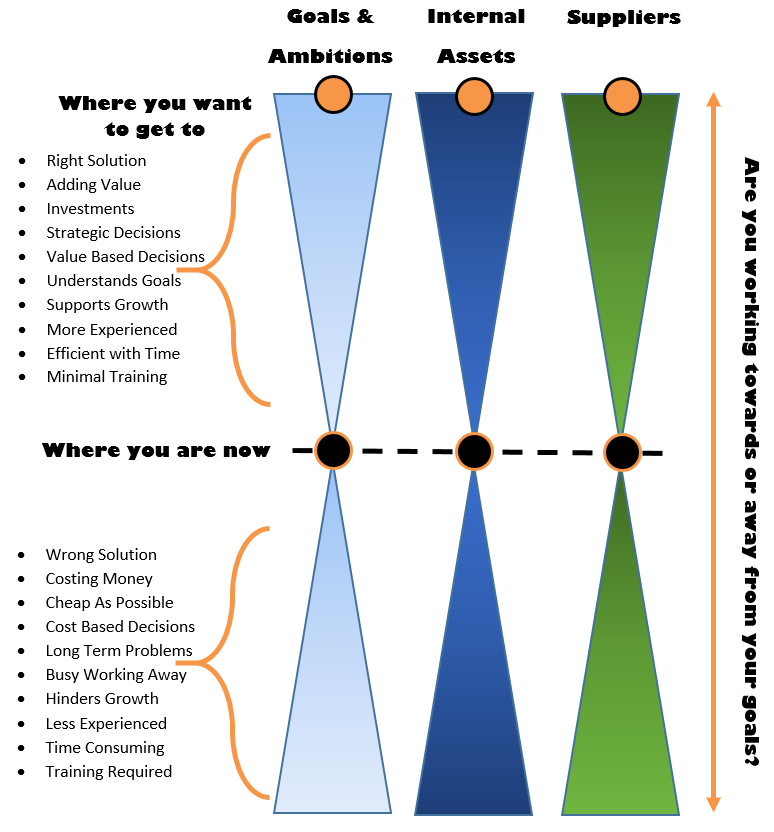
Markets are changing at a faster pace than ever before and as a business it is essential that you keep up to date with these changes to compete. There is an enormous cost of doing nothing within business as competitors are continually improving and markets are ever shifting. We’re not talking about significant innovation within your business, although this is absolutely essential and a topic for a future blog post, no, where talking about incremental improvements based on making strategic decisions that are going to move your business forward.
To put this into perspective, below are a few graphs showing the cost of doing nothing compared to the results of making the right decisions. The top graphs show a 5% decline year on year based on an ever more competitive market place, which you have failed to keep up with, and the bottom graph showing a 5% increase year on year based on making the right strategic decisions. The data is clear;
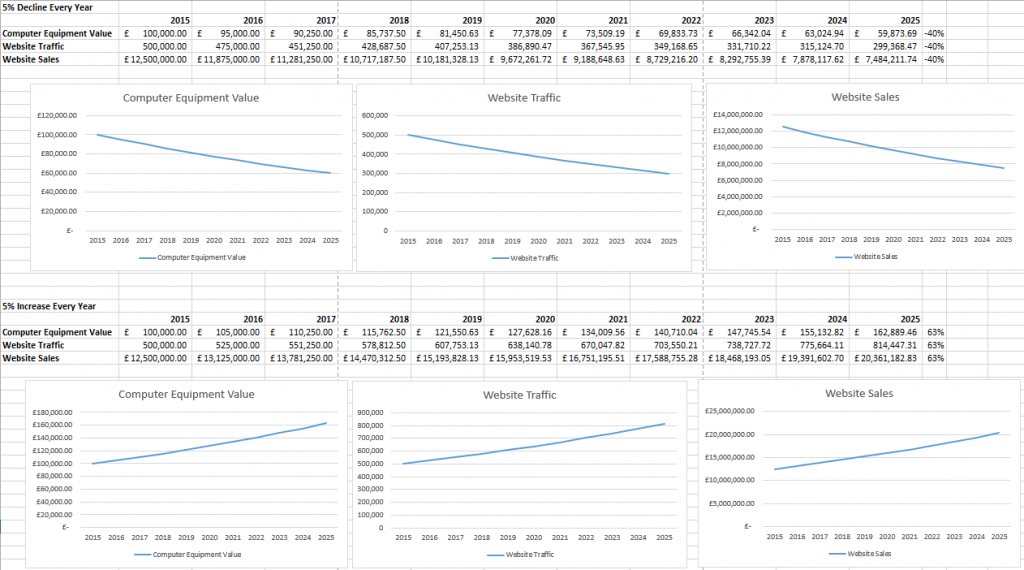
(click for larger graphs)
Remember, you are either actively improving your business in all aspects or you are falling behind. There is no middle ground of staying steady. Take some time and have a think about your business in a critical way for every aspect. And remember, we always have time for a coffee if you want to bounce a few ideas off us, we’re a friendly bunch and will always give you honest feedback and comments about your digital and technology choices whether this is what you want to hear or not. We like to work with businesses and help them along their journey to their goals and ambitions.
by Michael Cropper | Jul 1, 2015 | SEO |
Why is it that so many businesses still see a website as a cost rather than an investment to generate a return? We live in a digital world so why isn’t your online presence at the forefront of your business strategy to increase revenue? Well, after speaking with thousands of businesses ranging from startups all the way up to companies with offices around the globe, I’ve noticed a few common comments and it’s time to debunk some of the common reasons we hear and get serious about your investments in digital channels.
The Current Situation
So many established businesses will happily spend money on traditional activities because that is what they have always done. The world has changed, it’s time to keep up or give up. Traditional ways that money is spent includes sponsoring awards, radio advertising, printed materials such as flyers and handouts, promotional products such as pads, pens and mugs, trade fairs, direct mail, advertisements in magazines and newspapers, printed banners, popup stands and many more methods. Money is spent in these areas without batting an eyelid. Because apparently this is what we need to run a business, right? Have you ever attempted to calculate the return you generated as a direct result of your spend on these activities? I imagine that if you have, you have also struggled to attribute any of these activities individually to a direct increase in revenue.
Let’s be clear here though, I’m not saying don’t do any of these. I’m a huge believer of testing everything and tracking the results. And yes, these activities certainly support your overall marketing strategy. But you have to ask yourself the question, if we live in a digital world, why aren’t you investing more seriously in digital channels? What are you afraid of?

If you see your website as a cost, you’ve already lost. A website should support your business goals, sales and marketing strategy and more. Your website should be a key touchpoint during the sales process or should be directly generating revenue for your business through ecommerce sales or generating enquiries.
Digital Doesn’t Work for Our Industry
Seriously? Did I just hear you correctly? I kid you not, this is something we have heard on multiple occasions.
** Takes a deep breath **
You think that digital doesn’t work in your industry? I ask you to prove to me that digital doesn’t work in your industry. I want to see all of the following that you have invested in previously and generated zero results if you truly believe that digital doesn’t work in your industry;
- Show me your Google Analytics data, how many visits are you getting per month from different traffic sources, what are these website visitors doing when they get to your website (Are they bouncing away straight away? It’s probably because you have a horrible website or you are getting low quality traffic), how many enquiries or sales are you generating through your website? (You aren’t tracking this you say?), is your website traffic increasing or decreasing every month? (You are tracking this on a regular basis aren’t you?)
- Show me how visible you are on Google when customers are searching for your key products and services? (You are tracking this data aren’t you?)
- Show me how your pay per click advertising campaigns are performing on Google AdWords (You have tested this haven’t you?)
- Show me how your social media campaigns are feeding into your digital marketing strategy to connect with key influencers and boost your brand online (You are active on social media on a regular basis aren’t you?)
- Show me how well your email marketing campaigns are performing, I want to see open rates, click through rates, popular content, active customers
- Show me your average order values and customer lifetime values per traffic source, I want to see how your individual digital marketing campaigns are performing against your traditional marketing activities. Show me the return on your investments for all of your activities.
During our initial analysis when speaking with businesses, we ask some very probing questions about the businesses we may choose to work with in the future. We want to make sure that you are ready to invest in digital seriously. We want to make sure that you are truly open to increasing your revenue through digital marketing, or whether you are simply looking at digital to dip your toe in and seeing everything as a cost and a tick box exercise.

Generally speaking, when we hear comments such as “Digital doesn’t work for our industry” there isn’t a great deal we can do to help at this stage. Let’s chat again in a couple of years when you’re ready to talk things through seriously and are more aware about how the world has changed. For those who can answer some of the basic questions outlined above, then this is where we come in to get you on the right track and get your digital marketing campaigns performing well.
We Had SEO Done Once
Search Engine Optimisation is never done. It is part of an ongoing process designed to increase organic traffic to your website over time and ultimately sales / enquiries / revenue depending on the sector you are working in. We’ve seen businesses who thought they “had SEO done” previously and decided to go no further, against our best efforts to convince them otherwise. Avoid making the same mistakes as we have seen to many other businesses make, invest in your digital channels to build long term results, rather than seeing SEO as “done”;
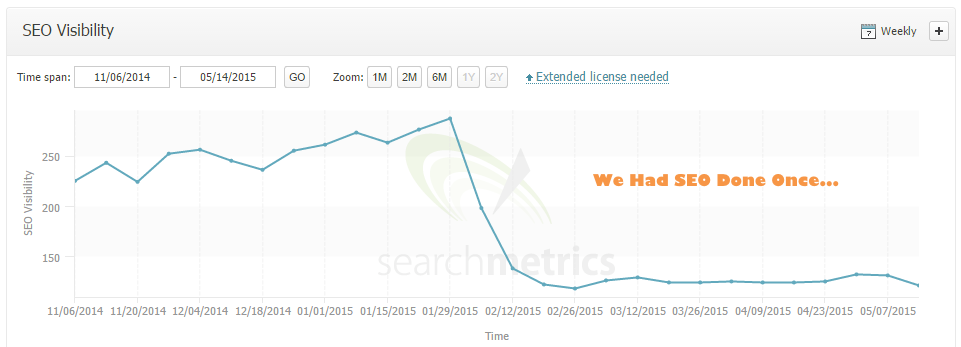
Would you ever see your physical shop or office space as being “done”? Or would you empty the bins daily, clean the carpets, tidy the desks, bring in new customers, promote your shop as being open, walk your shop floor daily, add new products to your inventory, run special offers and promotions to generate new customers and more? It is no different when looking online. The only difference comes down to choice. Each individual business either choses to invest in digital, or they don’t. Living in a digital world, you yourself will naturally research many of the products you have around you right now online in the first instance.
We Already Have a Website, Why Do We Need Another?
Is your website performing? No? Is your website mobile friendly? No? Does your website look like it was built in 1996? Yes? Your customers online are looking for a website that sells a specific product or service, is extremely easy to use, is branded very well and fits with their personal beliefs. If you website was built by your friends neighbour’s son who was taking a Dreamweaver course 10 years ago then it probably isn’t going to be relevant for your customers.
A bad website is like turning up trying to sell to potential customers unwashed, unshaven, wearing unfitted clothes with holes in and smelling like a wet dog. If you turned up in person to sell to potential customers like this, how do you think they would react? And how is this different online?
Your website is your digital shop front, make it count and engage with your audience. Website visitors want to see that you care, that you are there to help them accomplish their goal, that you are only a phone call away from being able to answer their queries and that you actually want new customers. A bad website simply pushes people away.
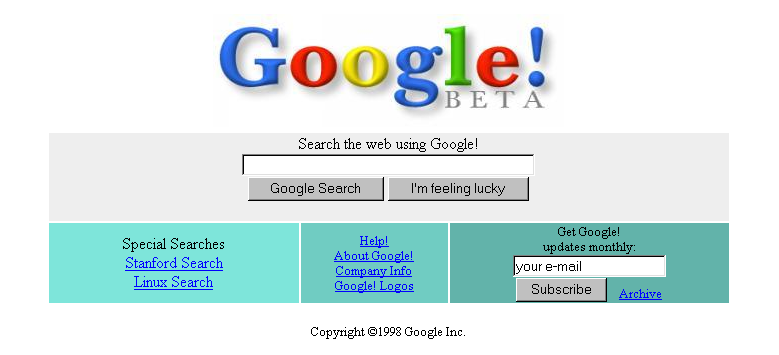
A good website builds loyal customers over time. Your website may not look as bad as Google’s did back in 1998 (although we have seen some that do come close!). Do you think Google would be as popular today if they didn’t invest in their website seriously over the past several years?
We Spent 10’s of Thousands on Our Website about 5 years
5 year is a lifetime in the digital world. Traditional civil engineering projects are often designed to last 100 years. You’re lucky if your website lasts 100 months without any input. Unfortunately spending money on digital projects does not guarantee quality. We’ve seen so many instances where companies have spent a lot of money on websites which simply haven’t delivered. Only recently have we seen a brand new website launched that is effectively telling Google to go away.
This is an unfortunate reality for many businesses, which is why we launched our Digital Lifeline packages so you can call on someone to give you solid advice about your digital activities and website technologies. Having bought a website years ago and wondering why this isn’t performing now is a little mad when you compare this to the real world. Imagine if you bought an old car from a sleazy second hand car sales man, you can picture the type, and then you decided not to get an MOT done at all, no services, any repairs were done with your own hammer, screwdriver, car manual and a bit of duck-tape where needed. How do you think your car would be performing today? Probably not very well.
Again, the same is true for your website. If you see your website as a cost, then you have already lost. If you see your website as a vehicle to increase ecommerce sales, enquiries from around the globe and ultimately revenue then you are on the right track. Imagine living out in the sticks, with only a post office and a corner shop in the village. Not a great deal of job opportunities (i.e. personal revenue). In this instance, buying a car isn’t a cost, buying a car gives you freedom to break into new markets such as cities and increase your personal revenue by getting a higher paid job. Your website is no different – when you invest in your website seriously.

Your Website Should Generate a Return on Your Investment
Have a think about this;
- If I asked you to give me a £1 coin right now, how many of you would pop one in the post to us? No-one? Why? We’re a great bunch of folk 🙂
- As a comparison, if I asked you to give me a £1 coin right now, and I would give you £2 back, how many £1 coins would you send us in the post? I’m guessing that you’d empty your bank account, right? Because you would double your money overnight.
The logic of investing in digital marketing channels is no different. The difference being between traditional marketing channels and digital marketing channels is that you can track every single detail in one of these channels, whereas you can track very little results in the other channel.
Looking at the famous quote;
“Half the money I spend on advertising is wasted; the trouble is I don’t know which half.”
I’d like to expand on this quote and be a tad facetious;
“Half the money I spend on advertising is wasted; It’s the offline half!”
Being able to track and understand how all of your marketing channels are performing will allow you to make strategic decisions to grow your business. Simply spending money aimlessly on activities that you’ve always done in business probably isn’t the best approach going forward, unless you are confident that this is already working for you.
Next Steps
We work with businesses of all shapes and sizes, some who are well versed in digital technologies and are needing support along their fast paced journey, and also companies who require a good amount of support as they are still at the start of digital journey. We will work with any business who requires our help and is ready.
The familiar quotes couldn’t be truer;
“You can lead a horse to water, but you can’t make it drink” – Quote
“When the student is ready, the teacher will appear” – Chinese proverb
“A journey of 1000 miles begins with a single step” – Chinese proverb
We’re ready to work with you and your company as soon as you are. All of the contents of this blog post are choices which people and businesses can make. People either choose to do something about their underperforming website and talk to us, or they choose to do what they have always done.
The more companies I personally speak with, the more I realise that success in the digital world is not down to our amazing work alone (although this does help!) but it is often down to the choices made by the individuals within either ambitious or struggling businesses.
Remember, all you need to do is ask we we’ll be there to help.

by Michael Cropper | Jun 29, 2015 | Developer, Digital Marketing, SEO, Technical |
We’ve spotted a trend recently with many website developers utilising technologies that make it difficult for search engines to crawl and index the website. Meaning that when search engines find it difficult to understand the content of your website, that you are in a position whereby Google may either penalise your website for spammy behaviours or simply losing a significant portion of the traffic to your website and ultimately revenue too. Clearly for websites that are generating a lot of visits from search engines, if this suddenly dropped off, how much revenue would you lose out on?
The trend we have spotted is around using JavaScript technologies which are inhibiting search engines from crawling websites. So while a new website may look flashy and all-singing-all-dancing, but if the new website cannot be easily crawled by search engines then quite simply you are going to be losing a lot of organic traffic to your website and ultimately sales / enquiries. Don’t make the same mistake that so many website developers do and use the latest technology without thinking through the consequences of what this means for your overall digital marketing strategy.
Common Problems
The common problems we are seeing more frequently at the minute are with developers using JavaScript technology which often looks nice for users. From a search engines perspective, JavaScript technology is difficult to crawl which can confuse the search engines and would always be recommended to avoid.
As a prime example, a local business recently re-launched their ecommerce website which certainly looked pretty but when viewing the website with JavaScript turned off (as Google would see it), then there is no content to display at all;

A website that looks good but can’t be indexed to Google is the equivalent of having a beautiful shop on the high street and keeping your doors locked at all times – you aren’t going to be generating any sales. For this business specifically, they have been notified of the issue and are working to fix the problem. Let’s be clear though, this is the exact reason why it is important that you are working with the right digital agency who understands how each piece of the digital marketing jigsaw fits together. A good looking website is often not the same as a good performing website. Good performing websites think about usability, functionality, SEO, PPC, Email Marketing, Conversion Rate Optimisation and more.
Why this is a problem for search engines
Developers love to use new technology, but this isn’t always the right decision to make. As a nice comparison, if a new website removed the traditional login username and password and instead replaced this with fingerprint scanning technology to access the website, which is possible. Sounds like a fun and exciting thing to play around with, right? But when you dig a little deeper, this means that only those with the latest Samsung Galaxy phones and certain specialist laptops would be able to use this technology, forcing everyone else away.
There is always a place for new technology and we would always encourage people to experiment with new technology to lead the way in their industry. That being said, you cannot do this at the expense of forcing people to use this technology if they don’t have the means to do so.
The same is true for Google. Search engines cannot easily index content that is powered by JavaScript. Which means that all pages on your website need to be accessible when JavaScript is turned off. Google recently updated their official guidelines on the topic which states that websites should be developed using Progressive Enhancement. So while some of your JavaScript based content may be being found by Google, it would always be recommended to follow Google’s guidelines on the topic to improve the chances of benefitting the website in terms of SEO;
What is Progressive Enhancement?
So what exactly is progressive enhancement? Well it comes down to creating a website (or mobile app) that can be run on all devices easily with basic functionality. Then if a certain device has a specific piece of functionality or technology, then you can enhance the usability of the website based on this technology. Most importantly, don’t assume that everyone accessing your website has all of the technology available that you think they do.
For example, how many times have you been prompted when accessing a website from your laptop which asks if it is OK if this website uses your location?

While this technology can certainly work on website, it is often rather inaccurate due to the way your location is essentially guessed based on several factors. Compared with the GPS signal from your mobile phone which is accurate to within a few feet of your location. This is a prime example of when progressive enhancement would be used, with a baseline set of website features not using the Geolocation and only asking the user if you can use their location when they are accessing from a mobile device. People accessing services through their mobile device are used to giving websites their location in return for some form of added features or functionality. As an obvious example, Google Maps clearly needs your location to help you get from A to B.
From a search engines perspective, it is important to use progressive enhancement at all times to ensure that they can easily crawl and index your website and content. Far too often are JavaScript based websites (and Flash websites back in the day!) are built without thinking about how Google is going to be able to crawl them. When using progressive enhancement, this ensures that the baseline website is still accessible to Google when JavaScript is turned off.
Progressive enhancement is not only recommended by Google, but it is also recommended by the wider community opposed to the older approach of graceful degradation. The reason behind this is because it provides a much better user experience when people are accessing a website from a variety of devices with multiple technologies.
As a simple summary of the above, all modern smartphones come built with GPS, accelerometers, gyroscopes, compasses, barometers and more. Whereas most laptops and desktop computers don’t have any of these technologies built in by default. Any website that depends on technology for key features or functionality that not everyone has is doomed to fail.
How to Test
To check your own website is displaying correctly for Google, turn JavaScript off in your web browser and navigate around your website. If you can’t easily access all parts of your website with JavaScript turned off, then the chances are that search engines are also having difficulty. While it is true that Google does attempt to index JavaScript based content, they do still find it difficult which is why they recommend progressive enhancement their self.
Removing any ambiguity from your website means that Google will be able to crawl and index your website with ease. It is easy for Google to assume that you are showing one version of content to the user and another version of content to search engines – for which websites can be penalised for this behaviour. Always use progressive enhancement as a way to develop websites effectively.
If you need any tips, advice or pointers related to the technology your website is using then get in touch. We have a range of services to support your individual needs, from starter Digital Lifeline support packages to our high end consultancy packages designed to be tailored to your every need.
by Michael Cropper | Jun 18, 2015 | SEO |
Did you know that Google is tracking your every single move? No? Most people don’t, yet they are;

The above is where I have personally been recently while out and about on the road visiting businesses which is naturally a large part of the work that I do. This isn’t some feature that I have personally set up. No, this is something which Google has enabled by default and means that they are tracking my every move, and yours too. I’m sure there will be some small print in the terms of use somewhere but this isn’t the point.
Google is not alone in this activity. Back in 2012, Apple were found out to be tracking users without permission. With the rise of smart technology such as phones and tablets, which have many sensing devices built in, there needs to be a much easier way for users to understand what data is being tracked and how this is being used.
Check what Google knows about where you have been recently
To see what Google knows about where you have been recently, click the above link and sign into the (or one of the..) Google Accounts that you are signed into on your mobile phone. You’ll be surprised at what you can see!
Clear Permissions and User Control
Currently it is not clear for users what data is being tracked by the majority of software and apps that you are using on your mobile devices. The industry as a whole needs to take more responsibility for privacy and security related issues. Google has recently launched Google My Account which is designed to take this a step closer to where we need to be, although I’m not sure this going far enough;
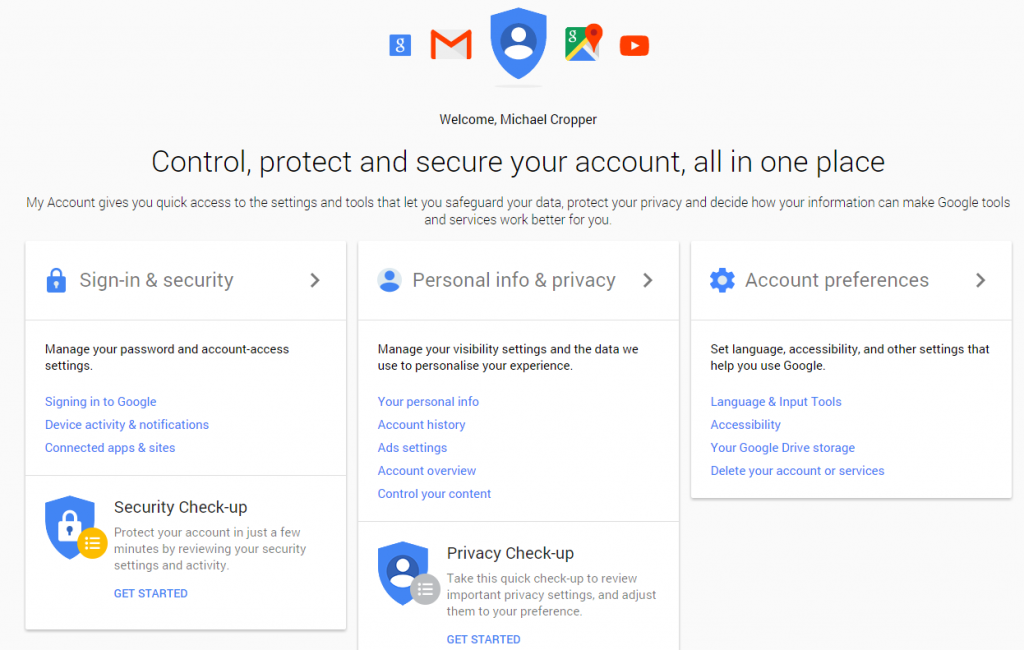
If you are concerned about what information Google is tracking about you, it would be recommended to check through the settings for all of your Google Accounts within the My Account feature that has recently launched. Specifically where you can turn off the feature for how Google is tracking your every move if you feel this is a little too invasive into your life. Simply navigate to the Personal Info & Privacy page, then scroll down to the Places You Go section to turn this off;
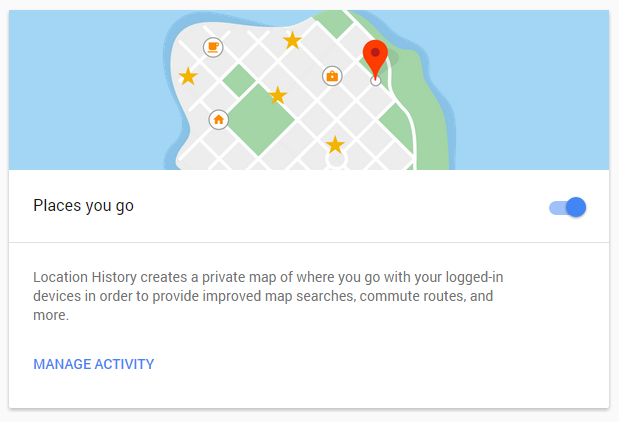
Privacy
The amount of data that is being collected about everyone on a daily basis is enormous. Data that can ultimately be used for advertising purposes, sold to other companies or even stolen by cyber criminals. There are already rules in place around data security including the Data Protection Act which states that any information stored must be;
- used fairly and lawfully
- used for limited, specifically stated purposes
- used in a way that is adequate, relevant and not excessive
- accurate
- kept for no longer than is absolutely necessary
- handled according to people’s data protection rights
- kept safe and secure
- not transferred outside the UK without adequate protection
There is stronger legal protection for more sensitive information, such as:
- ethnic background
- political opinions
- religious beliefs
- health
- sexual health
- criminal records
What is interesting when comparing the above with what is actually happening in the world, it takes no legal expert to raise a few eyebrows at the disparity between the rules and reality. What is clear though is that there needs to be a much more thorough and clear process in place for all data stored about people by large organisations. When comparing this to a real world context, if you were being followed around all day, every day, by a private investigator how would you feel?
by Michael Cropper | Jun 14, 2015 | SEO |
A while ago we talked about what the new top level domains mean for businesses. Since writing that blog post over 12 months ago, a lot has happened. Since the initial announcement of new top level domains coming to the market, we thought it would be worth looking at what has actually changed and what you can actually do with the new domains.
New Generic Top Level Domains
Back in February 2014, there was a total of 362 top level domains that had been registered. Today, there are 988, a figure that is almost triple. Again, have a good browse through the top level domains that have been registered over the past year to get a feel for how things are changing.
An interesting point to note that while we have seen an almost tripling of top level domains that have been registered, we’ve yet to see any significant rollout of these domain names from businesses and brands online. The .google top level domain has been registered, yet we are all still using google.com or google.co.uk when searching. Likewise, .barclays has been registered but we are also still using barclays.com or barclays.co.uk. So why is this?
Well, honestly, things haven’t really changed that much over the past year when it comes to how customers perceive top level domains. If anything, people have become more wary of websites that don’t appear genuine, with cyber fraud and phishing attacks becoming part of everyday life. You only need to look back and read some of the topics we’ve covered on cyber security recently to see the scale of the problem; Cyber Security Conference 2015; Online Fraud and Cybercrime is a Serious Threat in 2015; Creative Entrepreneur 2014; A Short Story About… A Poorly Designed Website Allowing Anyone to Register as an Administrator Without Validation or Authorisation.
What this has ultimately led to is a situation whereby it appears that brands aren’t willing to experiment with the new top level domains just yet. So we thought we would experiment a little to see what kind of things we could do. It would be extremely unlikely for us to switch over to our new top level domain for the main website, since people are still very unsure about the new top level domains and still associate websites with the traditional .com and .co.uk. Hence why this is a nice little experiment to see how people can interact with websites and brands in a more user friendly and effective way with a little thought and planning.
Introducing contrado.digital
That’s right, we’ve just purchased a trendy domain that fits well with our brand, http://contrado.digital. Yes this is the full domain. The .digital top level domain became available quite recently, so we thought it would be worth securing this to protect the brand. Going beyond this, we’ve set up some additional functionality that allows you to interact with us a little easier.
http://search.contrado.digital
To search the Contrado Digital website, you could use search functionality that is built into WordPress, www.contradodigital.com/?s=searchQuery, although you may not know that exists. We’ve kept the search functionality hidden on purpose for the time being to avoid cluttering the main navigation as we found that it wasn’t being used a great deal by the majority of website visitors. But what if you still want to search the website without having to remember what the specific search URL is?
That’s why we created search.contrado.digital. Simple type this into your web browser, followed by your search query and you will automatically be shown a search results specifically for your query. For example, here are a few you can try;
So there’s a nice easy way to find exactly what you need on the Contrado Digital website.

http://email.contrado.digital
To email us at Contrado Digital, again, simply type the following into your web browser, email.contrado.digital and you will be presented with a simple way to drop us an email without any effort at all. Go on, give it a go;
Yes, you could just go to the homepage, scroll down to the bottom and click on the link there. But why waste your time looking for an email address when you could just setup a nice piece of functionality that automates this whole process for you.

Social Media Channels
How about if you want to go straight to our social media channels to find out the latest trends happening in the digital world? Sure, you could again go to the website, hunt for the social media icons or go to the social media website and search for us there. But why waste your time doing that when you could just go straight to the relevant channel with ease;
Nice little bit of functionality!

Summary
While the new top level domains are certainly still in their infancy, is there any way that you could be using these to help your audience connect with your brand easier? I’m sure there are many different and unique pieces of functionality that can enhance the user experience of your website by using this technology. What ways can you think of that would help by using a similar setup?


















